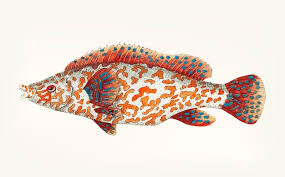Exploring the Influence of Dragons in Murals of Ancient Chinese Monuments

In the rich tapestry of Chinese history, dragons hold a place of profound significance, acting as symbols of imperial authority, cosmic power, and divine protection. Their influence extends far beyond folklore and mythology, permeating various forms of art and architecture throughout ancient China. One of the most captivating places where the image of the dragon is prominently displayed is in the ancient murals adorning temples, tombs, palaces, and other monumental structures. These wall paintings, often found in archaeological sites, tell us stories not only of the religious beliefs and customs of ancient Chinese society but also of the monumental role that dragons played in these sacred and royal spaces.
This article delves into the exploration of dragons in the murals of ancient Chinese monuments, examining how their imagery was used to convey power, protect the dead, ensure prosperity, and uphold moral and spiritual values. The presence of dragons in these ancient artworks speaks volumes about the cultural, political, and religious ideologies that shaped China’s history. From the towering murals in imperial palaces to the hidden paintings in tombs of the nobility, dragons were intricately woven into the fabric of Chinese artistic expression, linking the celestial with the earthly and serving as protectors and bringers of fortune.
The Role of Dragons in Ancient Chinese Murals
Murals have long been a significant art form in China, especially in religious and ceremonial contexts. In the earliest dynasties, particularly the Han (206 BCE – 220 CE) and Tang (618–907 CE) periods, murals were used to decorate tombs, temples, and imperial structures. Dragons were often depicted in these murals for their powerful symbolism, with different dynasties and regions offering their unique interpretations of the dragon’s role and influence.
In Chinese art, the dragon is often considered a symbol of imperial authority and good fortune. The emperor, believed to be the “Son of Heaven,” was closely associated with dragons, reflecting his divine right to rule and the prosperity he was supposed to bring to the people. Dragons were believed to command the forces of nature, especially water, which was critical for agricultural success, and thus their representation in murals often signified the emperor’s role as a protector and benefactor of the land.
Dragons as Cosmic Symbols in Temples and Religious Murals
One of the most common places where dragons appear in ancient murals is within temples dedicated to deities and spirits. The purpose of these murals was not only to honor the divine but also to connect the celestial world with the human realm. In these spaces, dragons were depicted as celestial creatures, often soaring above the clouds or coiled around sacred symbols, such as the pearl of wisdom or the sacred tree. The dragon’s association with the heavens was believed to protect both the temple and its worshippers.
In Buddhist temples, particularly during the Tang and Song Dynasties, dragons were often portrayed in murals as guardians of the Buddha’s teachings and protectors of the faithful. This symbolic role was a continuation of earlier beliefs that dragons could bring prosperity and protection, only now they were also tasked with safeguarding the spiritual realm. Dragons in these murals were sometimes shown in battle with demons, symbolizing the triumph of good over evil. This imagery reinforced the idea that the cosmic forces of good, embodied by the dragon, would ultimately prevail over the destructive forces of chaos and darkness.
Dragons in Imperial Palace Murals: Symbols of Power and Prosperity
In the grand palaces of imperial China, murals featuring dragons were used as symbols of the emperor’s divine power and his connection to the heavens. The most famous of these murals can be found in the Forbidden City, the imperial palace complex in Beijing, which served as the political and ceremonial heart of China for centuries. Dragons were depicted as central figures in the décor of the Emperor’s personal quarters and the grand halls where state ceremonies took place.
These murals often featured dragons among auspicious clouds, signifying the emperor’s divine connection to the heavens. The five-clawed dragon, in particular, was exclusively reserved for imperial use, symbolizing the emperor’s supreme authority. It was a reminder that the emperor was the “Son of Heaven,” with the responsibility to rule justly and ensure the prosperity and well-being of the empire. In these settings, the dragon’s role was not only symbolic of imperial power but also representative of the blessings of good fortune that were thought to flow from the emperor to the empire as a whole.
Dragons in palace murals were also associated with protection. In ancient Chinese cosmology, the emperor’s authority was often considered as fragile as the balance of the natural and spiritual worlds. Therefore, dragons, as powerful and benevolent cosmic beings, were believed to offer divine protection to the emperor, ensuring that he could maintain stability and prosperity in his realm. The emperor, seen as the earthly embodiment of the dragon, could effectively command the forces of nature to bring rain, ensure harvests, and guarantee the prosperity of the nation.
Dragon Murals in Tombs: Guardians of the Afterlife
While murals in temples and palaces celebrated the living emperor’s connection to the divine, those in tombs often depicted dragons in a more protective and spiritual context. Ancient Chinese tombs were elaborately decorated with murals that served both as a means to honor the deceased and to ensure their safe passage to the afterlife. Dragons were commonly featured in these tomb murals as guardians who would protect the soul of the deceased in their journey to the afterlife.
In the tombs of emperors, nobles, and high-ranking officials, dragon imagery played an important role in ensuring that the deceased would enjoy the same level of prosperity and power in the afterlife as they did in life. The most famous example of dragon motifs in tombs can be found in the murals of the tomb of Emperor Wu of the Han Dynasty, where dragons were depicted as celestial beings who would escort the emperor to the afterlife.
The dragon’s role in tomb murals was twofold: not only was it a symbol of protection, but it also represented the continuity of life and prosperity. It was believed that the dragon’s power could transcend death, ensuring that the deceased would continue to enjoy the benefits of good fortune, wealth, and divine favor in the afterlife. The murals in these tombs were created with the intent to provide the deceased with protection and prosperity in the spirit world, reflecting the high status and spiritual significance of dragons in Chinese culture.
Dragon Imagery in the Tang Dynasty: A Fusion of Cultures
The Tang Dynasty (618–907 CE) was a period of great cultural and artistic flourishing in China, and dragons played a prominent role in the art of this era. During this time, China saw an influx of foreign influences, particularly from Central Asia and the Silk Road. These influences contributed to a fusion of artistic styles and cultural elements that had a lasting impact on Chinese art, including the depiction of dragons.
Tang dynasty murals, especially those in tombs and temples, often depicted dragons in a more fluid and dynamic style, reflecting the influence of foreign artistic traditions. These dragons were portrayed as more animate, often twisting and writhing in the air, symbolizing movement and energy. They were frequently shown in battle or engaged in a cosmic struggle, emphasizing their role as protectors of the divine and bringers of cosmic order.
This period also saw the introduction of new mythological elements, such as the pairing of dragons with phoenixes, which became a popular motif in Chinese art. The phoenix, symbolizing the empress, was often depicted alongside the dragon, representing the harmony between the emperor and empress and, by extension, the prosperity and unity of the empire. This fusion of symbolism reinforced the idea that the dragon was not only a protector of the emperor but also a symbol of the balance between the celestial and earthly realms, essential for the prosperity of the state.
Dragons in the Ming and Qing Dynasties: Imperial and Cultural Legacy
The Ming (1368–1644) and Qing (1644–1912) Dynasties saw the continuation of dragon imagery in murals, particularly in imperial palaces and temples. However, during these later dynasties, the symbolism surrounding dragons became even more elaborate. In the Qing Dynasty, the dragon was incorporated into both the political and cultural lexicon, serving as a tool to reinforce the power of the ruling emperor.
The murals from this period depict dragons in a more intricate and detailed style, often surrounded by clouds, waves, and other auspicious symbols. These murals served to remind the people of the emperor’s connection to divine power and his role in ensuring prosperity and protection for the nation. As the Qing Empire grew in power, the imagery of the dragon became synonymous with imperial grandeur and cultural superiority.
Conclusion
Dragons in ancient Chinese murals are not just beautiful works of art; they are profound symbols of power, prosperity, protection, and spiritual continuity. From the imperial palaces to sacred temples and tombs, the presence of the dragon in Chinese murals reflects the cultural, religious, and political ideologies that shaped the course of Chinese history. As protectors, bringers of fortune, and divine messengers, dragons in ancient Chinese murals were much more than mythical creatures—they were symbols of the enduring connection between the human and the celestial realms. Today, the legacy of these ancient murals continues to inspire awe and admiration, reminding us of the vital role that dragons have played in shaping the cultural landscape of China.










